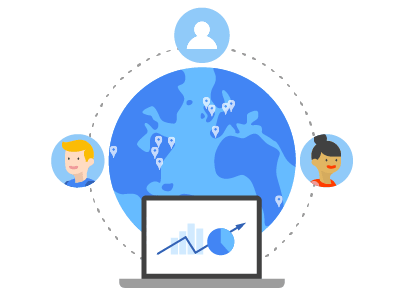CDN Load Balancer

The digital space has changed how society behaves for good. Ever since the advent of the internet, many of our basic routines have been anchored on the need to connect to wi-fi or cabled connection. Whether that be ordering food or contacting a bug inspector, we all rely on the internet to reach out to other people, on top of many other things. Perhaps this is why 'CDN load balancer' is beginning to make waves in search engines.
For this article, we’re talking about why people continue to look up CDN load balancer online, how CDN works, and what to consider when shopping for CDN hosting providers.
What is CDN load balancer?
Contrary to what you could be thinking now, CDN load balancer isn’t a singular piece of technology, nor is it a digital instrument. These are actually two different subjects in the aspect of content delivery. Content Delivery Networks (CDNs) are one thing and load balancers are another.
To start, CDNs and load balancers are both crucial instruments for distributing cloud-native applications and delivering modem. They fill big shoes in guaranteeing smooth-flowing operations between end-users and applications.
If you don’t utilize any of these tools, you risk your website of crashing indefinitely and slowing the web page loading times of your site. However, this doesn’t mean that ‘CDN load balancer,’ because they’re searched as a single phrase, are the same things. While they meet similar demands, they’re fundamentally different tools.
Defining CDN and load balancers
CDNs are a bunch of servers strategically distributed in many parts of the globe to more efficiently transmit web data to users wherever they may be.
Here’s a clearer picture: let’s assume your website is managed by a host origin based in Singapore. If this is the case, that means users from, say, Tokyo or the Philippines will have no problem with loading your web pages. As a matter of fact, the speed may even be quick. But for users who are in Chicago or Sweden, for example, the loading time it’s going to take for your website could be a tad longer compared to your Asian users.
This is how CDN works.
When you’re signed with a CDN hosting provider, your users no longer have to obtain web content solely from the origin. CDN hosting providers deploy numerous servers that have locations wherever your users are. That being said, CDNs efficiently reduce latency. If anything, learning how CDN works can benefit any website leader tenfold. Once you’re aware and much more knowledgeable about how CDN works, you’re better able to make informed choices about which provider to sign up with.
Furthermore, according to a source online, load balancers “improve the performance of networks and applications by automatically monitoring and managing application and network sessions. In addition to providing simple distributed service to multiple servers, load balancers can help prevent denial-of-service attacks, allow legitimate users uninterrupted access to services, protect against single point of failure outages and prevent traffic bottlenecks to systems.”
To an extent, the functions of CDNs and load balancers may arguably overlap. But both technical tools are designed to deliver content more effectively. Hence, it’s understandable why CDN load balancer continues to be searched for by developers; both tools, although they carry distinct differences, may augment each other and achieve desirable results much faster when combined.
What to look for in CDN hosting providers
Plenty of daredevils have tried making their own versions of CDNs, but if there’s anything you’d need the most when it comes to cloud content delivery, it’s accountability. When you’re signed with a provider, know that they now become in charge of helping you distribute your web data to global users. Should anything wrong happen, the last thing you’d want is not being able to approach a team of professionals to help you. This being factored in; customer service is one integral aspect you have to consider.
Before signing up with a provider, find out what their client services hours are and what mediums you’re able to reach them. Can you call them? Do they have chat options? Do they respond quickly to emails?
Naturally, transparent pricing is one thing business leaders can’t neglect. There are a ton of providers that have dynamic pricing rates, but many of them are released only when you ask for a quote. Some providers, like us, for instance, have very clear and predictable rates. A quick visit to our homepage already tells you how much you’re paying for when you choose us. Aside from being extremely cheap, we also provide a trial subscription!
To conclude, CDNs and load balancers are both critical in helping websites and apps reach their audiences. But if you’re determined to maximize website and app speed, resorting to both tools should come in handy.
Power-up your Content Delivery
30 Day Free Trial Cancel Anytime